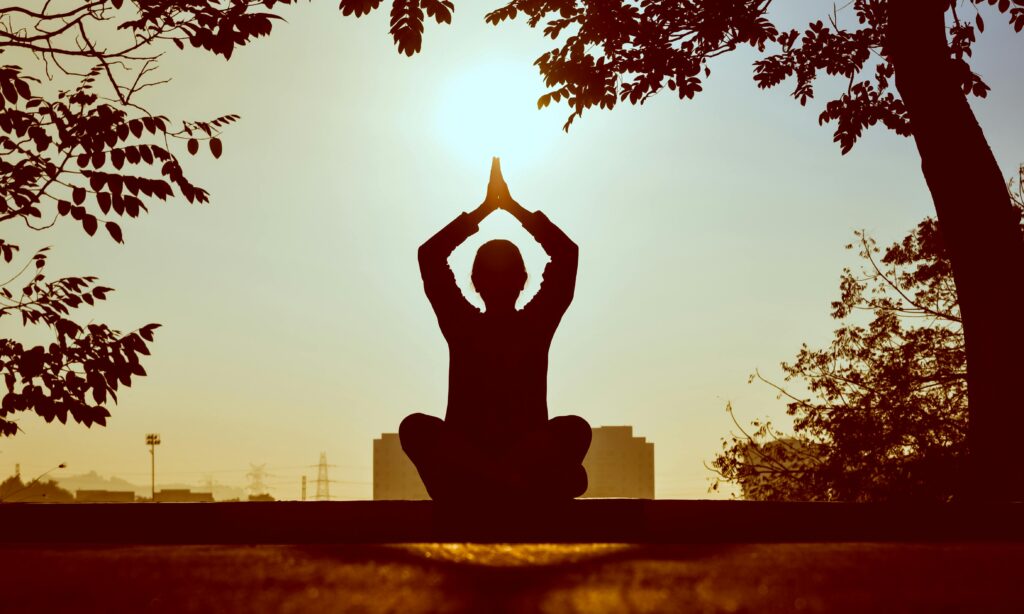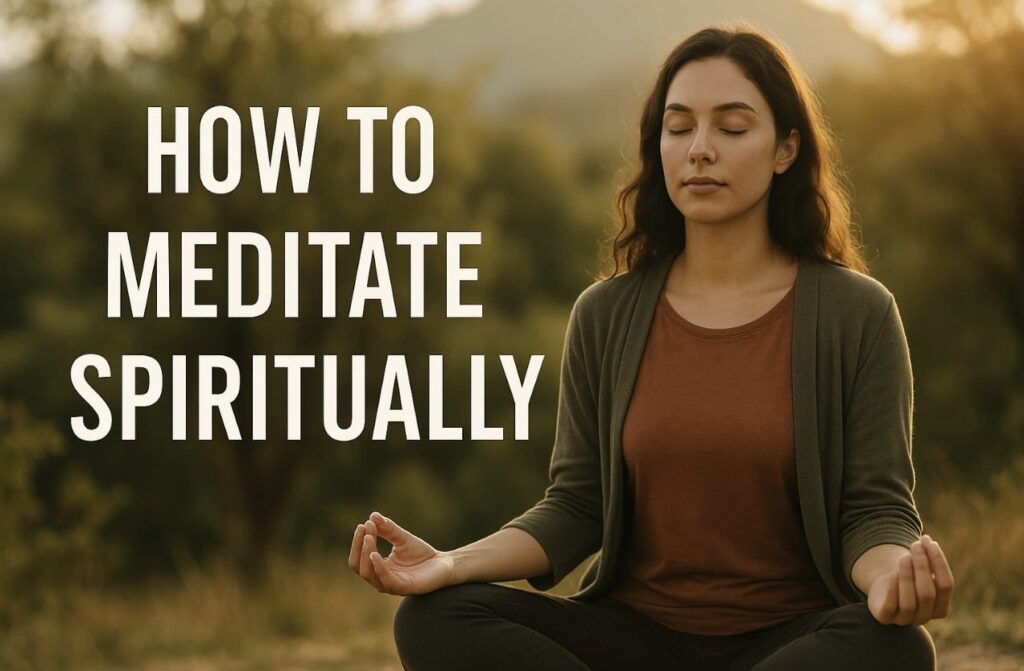
Let’s be honest life can feel like a lot sometimes. Between the constant notifications, endless to do lists, and that noisy inner critic we all seem to have, it’s no wonder we feel overwhelmed or scattered. And while we’ve all heard that “you should try meditating,” actually sitting still and calming your mind? Easier said than done.
The good news? Meditation doesn’t have to be complicated, woo-woo, or reserved for monks on mountaintops. In fact, there are simple, practical techniques that really do work even if your mind is racing or you’re new to the practice.
In this post, I’m sharing a handful of powerful deep meditation techniques that can help you feel more grounded, clear-headed, and at peace no matter what’s going on around you. Whether you’ve tried meditation before or this is your first time, these methods are easy to follow and surprisingly effective.
Let’s dive in.
Table of Contents
Types of Deep Meditation Techniques
Vipassana Meditation
Vipassana is one of the oldest forms of meditation practices , rooted in Buddhist tradition. The word Vipassana means “to see things as they really are.”
Vipassana is a form of meditation where you observe yourself your body and mind just as they are. You become aware of the sensations in your body without judging them or reacting. You could say it’s a powerful technique for purifying the mind, helping you see things clearly and calmly.”
Buddha said that every situation in life can be divided into two categories either it’s pleasant or unpleasant. If it’s pleasant, we tend to crave it, wanting more of it. If it’s unpleasant, we resist it, saying, “I don’t want this.” But in both cases whether you’re craving or resisting you remain stressed. That’s the root of suffering
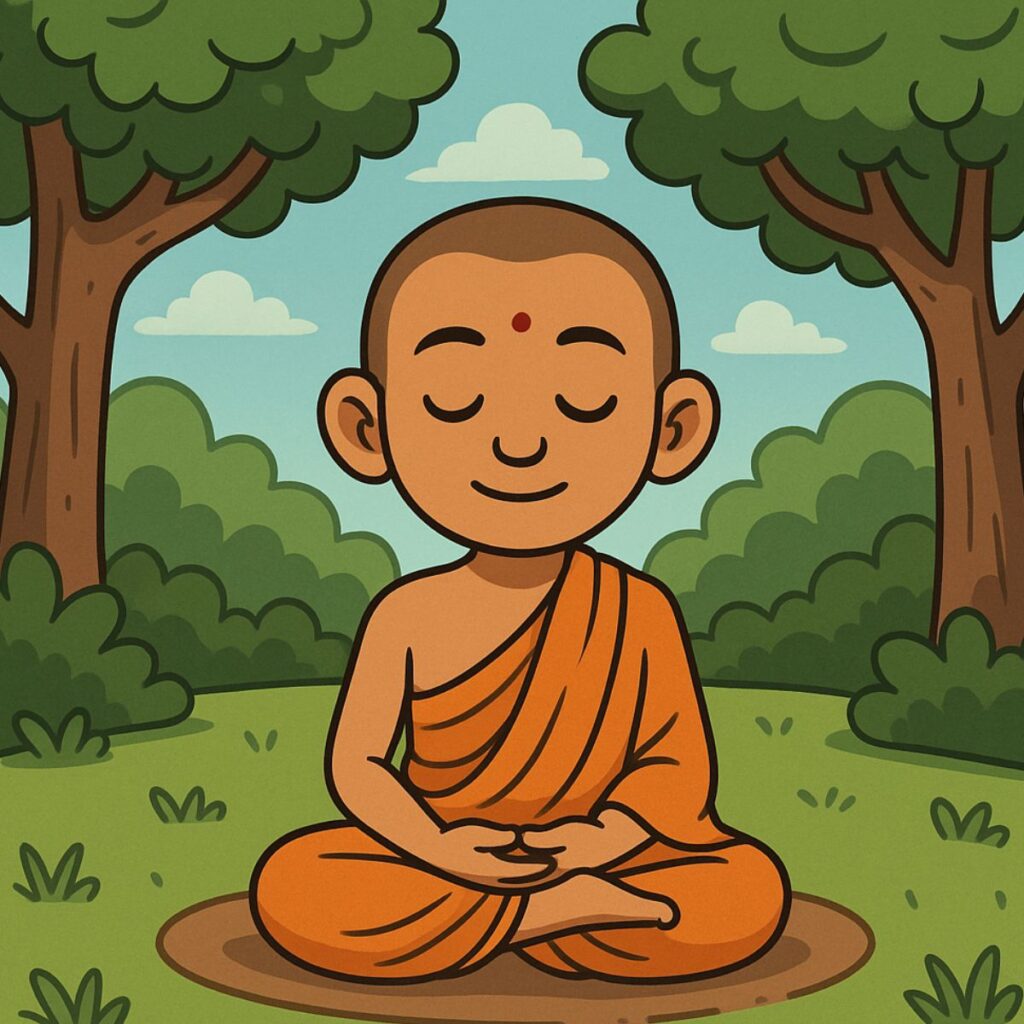
How to Do Vipassana Meditation (Step-by-Step)
Step 1: Choose a Peaceful Space
Find a place where you won’t be disturbed. It should be quiet, clean, and calm somewhere you can fully focus without background noise or distractions.
Step 2: Wear Comfortable Clothing
- Wear loose, breathable clothes
- Remove anything that may distract you like glasses, watches, or accessories
Your body should feel free and relaxed no physical discomfort to pull you away from your practice.
Step 3: Sit With a Straight Spine
Sit either cross-legged on the floor . The key is to keep your back straight and upright.
Think “alert but relaxed.” Don’t slouch, but don’t be stiff.
Step 4: Close Your Eyes and Focus on Your Breath
Now, gently close your eyes and bring your full attention to your natural breathing.
No need to control it ,just observe.
- Watch your breath as it comes in (inhale) and as it goes out (exhale)
- You might notice the coolness of the breath while inhaling
- And the warmth when you exhale
This sounds easy, but for beginners, it’s totally normal for the mind to wander. Just gently bring it back to the breath every time.
Step 5: Notice the Breath at the Nostrils
Pay close attention to the area right under your nose, just above your upper lip. This is where your breath touches as it enters and exits the body.
As your focus sharpens, you’ll start to feel subtle sensations in this small area like tingling, vibration, or temperature change.
Step 6: Observe Sensations Without Reacting
Once you’re fully focused on your breath, and you begin to feel sensations under the nose, just observe them.
- Don’t label them as good or bad.
- Don’t try to change them.
- Simply watch them come and go.
This is the essence of Vipassana observing reality as it is, without craving or aversion.
Step 7: Let the Mind Go Deeper Into the Body
As you continue practicing, your awareness will naturally grow. Your mind will start feeling sensations in other parts of the body too tightness, pressure, warmth, itching, etc.
Again, just observe. Let everything arise and pass, without judgment, without reaction.
Remember: In Vipassana, you must isolate yourself. No mobile phones, no electronic devices, no alcohol, no lies, no sexual activity, no harm to others, and no materialistic distractions.
Final Note:
Vipassana may seem simple, but it’s a deep and powerful practice. Don’t worry if your mind wanders or you get distracted just come back to your breath. Over time, your focus will sharpen and your awareness will deepen.
Start with 10–15 minutes a day and slowly build your way up.
Trataka Meditation
Trataka is a powerful yogic meditation techniques that involves fixing your gaze on a single point, usually a candle flame, without blinking. The word Trataka comes from Sanskrit and means “to look” or “to gaze.”
This ancient practice helps sharpen the intellect, improve eyesight, and calm the mind.It’s a cleansing and concentration practice that not only sharpens your focus but also purifies your eyes and clears the mind of distractions.
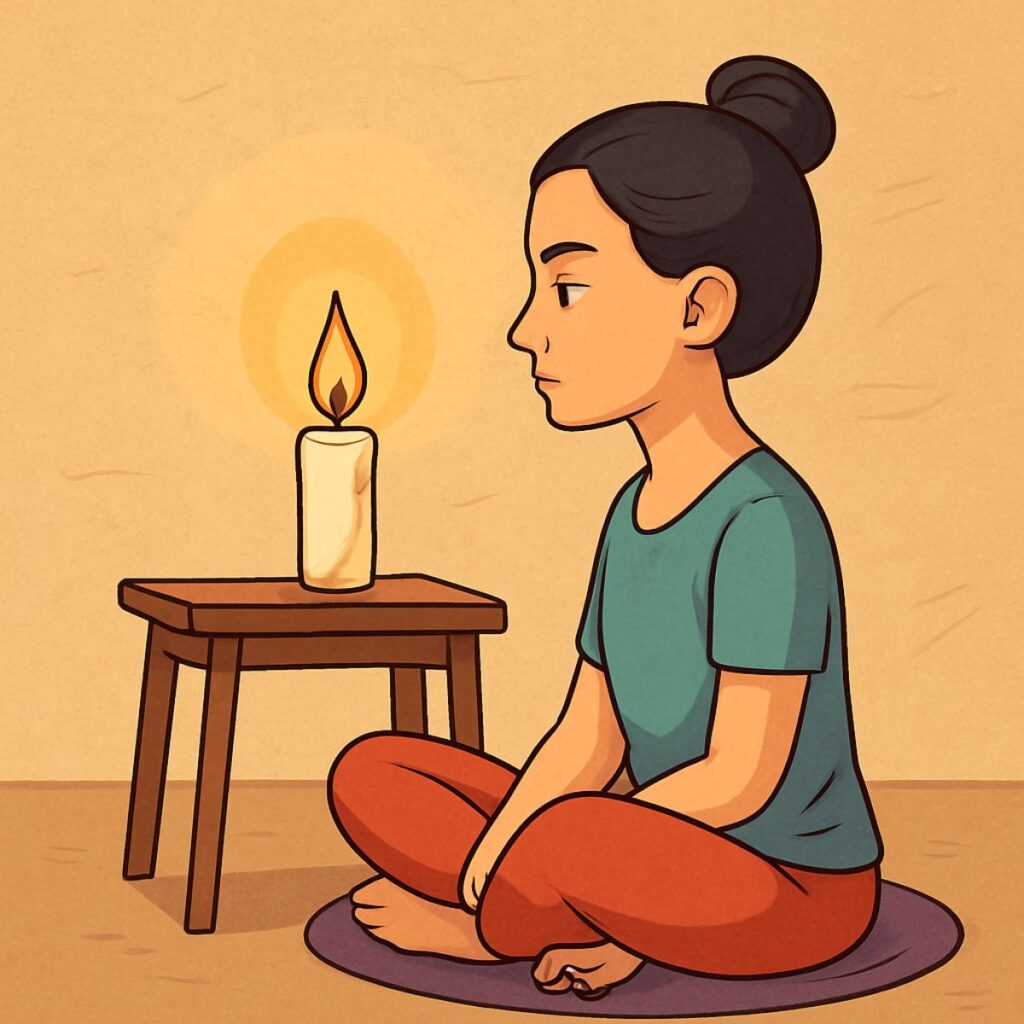
How to Do Trataka Meditation (Step-by-Step)
Step 1: Set Up the Candle
- Place a candle or oil lamp at eye level, about one arm’s length away from where you’ll sit.
- Make sure the flame is steady and there’s no wind or disturbance.
- Sit in a comfortable posture with your back straight.
- Remove your spectacles if you wear them.
- If you’ve recently had eye surgery, skip this practice or consult your doctor first.
Step 2: Prepare Your Body and Breath
- Close your eyes and take a few deep breaths—inhale… exhale—slowly and mindfully.
- Let your shoulders relax and settle into stillness.
- Stay in this relaxed breathing state for a minute or two to center your mind.
Step 3: Begin the Gaze
- Now, open your eyes and gently fix your gaze on the candle flame.
- Try not to blink. Just look at the center of the flame with steady, relaxed focus.
- If your eyes water or the focus breaks, it’s okay. Simply bring your gaze back without frustration.
Step 4: Internal Visualization
- After 1–3 minutes, gently close your eyes and try to visualize the flame in your mind.
- Focus your attention at the point between your eyebrows (the third eye center).
- Hold the mental image for as long as you can.
Step 5: Repeat the Process
- Open your eyes again and return your gaze to the flame.
- Repeat the cycle: gaze → visualize → gaze again.
- Do this for 3–5 rounds, or around 10–15 minutes total, depending on your comfort.
Tips to Remember:
- Keep your body still and your shoulders relaxed throughout.
- No strain—if your eyes feel tired, take a break.
- Over time, your focus will improve, and your mind will become calmer and clearer.
Mantra Meditation
Mantra Meditation is a technique that uses repetition of a word, phrase, or sound to help still the mind and enter a deeper state of awareness. The word mantra comes from Sanskrit:
“Man” = mind. “Tra” = tool or instrument.Mantra is a tool to guide and focus the mind.
So, a Mantra meditation helps clear the negative energy around us that often disturbs our peace of mind. By repeating a positive, high vibration sound or phrase, we create a protective and calming space both within and around us.
You don’t need to be religious or spiritual to benefit from it mantra meditation works for anyone seeking peace, clarity, or inner connection.
Traditional Sanskrit Mantras:
- Om – the universal sound; represents all creation
How to Practice Mantra Meditation (Step-by-Step)
Step 1: Find a Quiet Space
Sit comfortably in a quiet spot. You can sit cross-legged on the floor or on a chair with your feet flat. Keep your spine straight but relaxed.
Step 2: Take a Few Deep Breaths
Close your eyes and take 3–5 slow, deep breaths to center yourself. Let go of tension in the body and begin to quiet the mind.
Step 3: Choose and Begin Repeating Your Mantra
- Silently (or aloud), begin repeating your chosen mantra.
- Let the mantra flow with your natural breathing—no need to force it.
- If your mind wanders, gently bring it back to the mantra.
You can repeat the mantra silently in your mind, whisper it softly, or chant it out loud whichever feels natural.
Step 4: Continue for 5–15 Minutes
- Use a timer if you’d like, or count repetitions with a mala (108-bead meditation necklace).
- Stay with the rhythm of the mantra. With time, your mind will become quieter, and the mantra will feel more effortless.
Step 5: Sit in Stillness
After your session, stop repeating the mantra and sit silently for a minute or two. Just observe how you feel. Let the stillness settle in.
Mantra meditation is one of the most common and widely practiced forms of meditation around the world. Its simplicity and deep effectiveness make it accessible to people from all walks of life regardless of culture, language, or belief system.
Naam Jaap Meditation
Naam Jaap (also called Naam Simran) is a deeply devotional form of meditation practices where you chant or repeat the name of God or a sacred word with love, focus, and surrender. It is widely practiced in Bhakti Yoga, Sikhism, and many other spiritual traditions in India.
The word Naam means “divine name,” and Jaap means “repetition.” So, Naam Jaap simply means meditating by lovingly repeating the name of the Divine.
Choose a Sacred Name (Mantra)
You may choose a name mantra which resonates deeply with you. Examples include:
- “Ram”,“Radha” or the Mahamantra “Hare Krishna, Hare Krishna, Krishna Krishna Hare Hare ,Hare Rama, Hare Rama, Rama Rama Hare Hare”
There are no restrictions—the feeling matters more than the word.
This is a form of mantra meditation, but it holds great importance in spiritual awakening. Chanting sacred names like the Hare Krishna Maha Mantra or Radha’s name can lead one toward liberation (moksha). It is deeply connected to the path of Bhakti Yoga and holds a very special place in devotional practice.
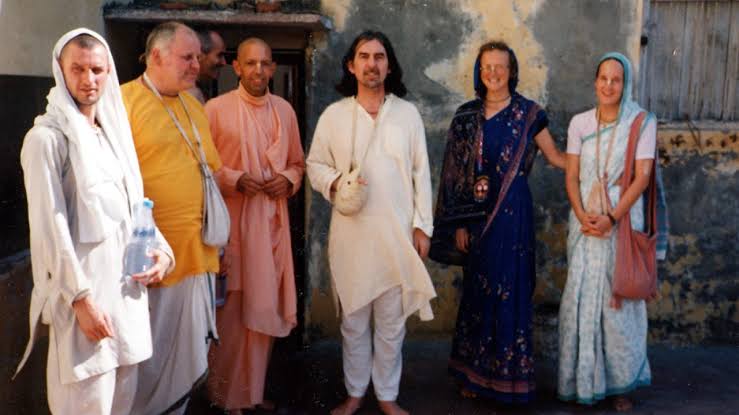
The British band, The Beatles, used to practice this form of Bhakti Yoga, which became quite popular worldwide. Organizations like ISKCON (International Society for Krishna Consciousness) teach and spread the path of Bhakti Yoga in a structured and inspiring way.

You can practice this meditation anywhere just chant the name 108 times or as much as you feel comfortable
These are some of the different types of meditation techniques that are easy to follow and practice, even for beginners.Start with the one that resonates most with you and let your journey toward inner peace and self awareness begin.
Also read:What Is Shadow Work and How to Begin: A Beginner’s Guide to Inner Healing
Hi, I’m Swaraj Das a registered pharmacist by profession and a passionate blogger at heart. I love writing about wellness, spirituality, uplifting lifestyle tips, practical life lessons, and inspiring stories. Through my words, I aim to bring clarity, motivation, and well being to everyday life.

